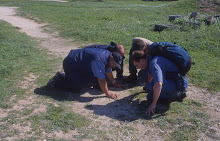martedì 6 agosto 2013
Cladistics
Cladistic is a method for reconstructiong philgenetic trees, in particular in animals and plants. It is based to the principle that only shared innovation that are not present in other groups are informative. For instance, fins are present in fishes, ichtyosaurs, seals and dolphins, and are therefore not iformative. Mammal glands, instead, occur only in mammals, and therefore are a good character (synapomorphy) to demostrate descent from a common ancestor. Early systematics was based on overall similarity, i.e both on innovations and ancestral characters, whereas modern taxonomy is based exclusively on innovations (apomorphies). The ideas of cladistic are credited to Hans Hennig in the '50s, but only in the '80s gained wide acceptance. And yet, exactly the same ideas are a century older in linguistic, and are known under the name of Leskien principle, that states that only positive innovations are usueful for philogenetic reconstruction of language relationshis. The reason why systematics lagged so behind lingusitcs, lies in the fact that evolutionary idea were commonplace in linguistics since its foundation n the XIXth cenutyr, whereas taxonomy remained more or less the same of its beginnings in the XVIII century even after the discovery of natural selection, and only very late evolutionistic ideas influenced effectively taconomy,
Iscriviti a:
Commenti sul post (Atom)

Nessun commento:
Posta un commento